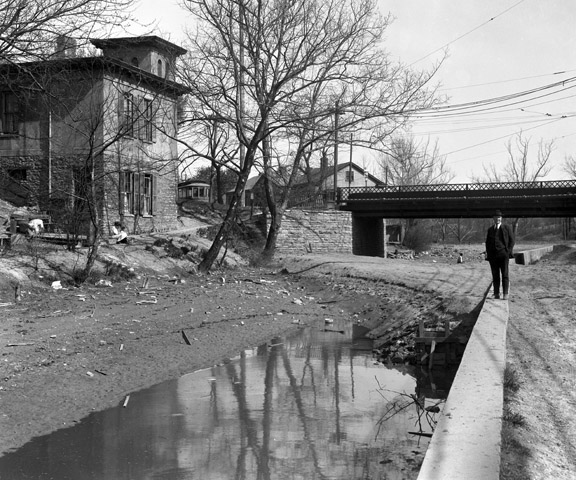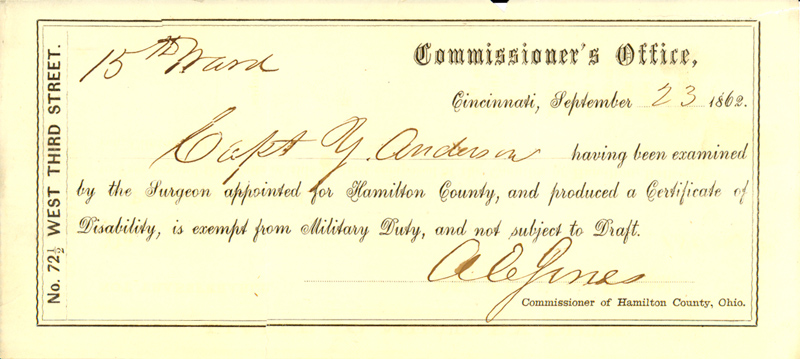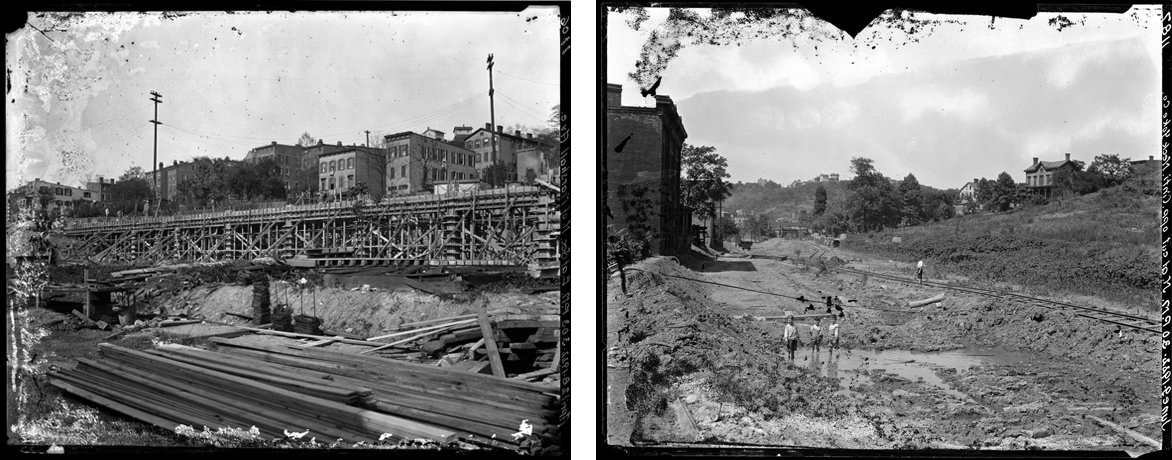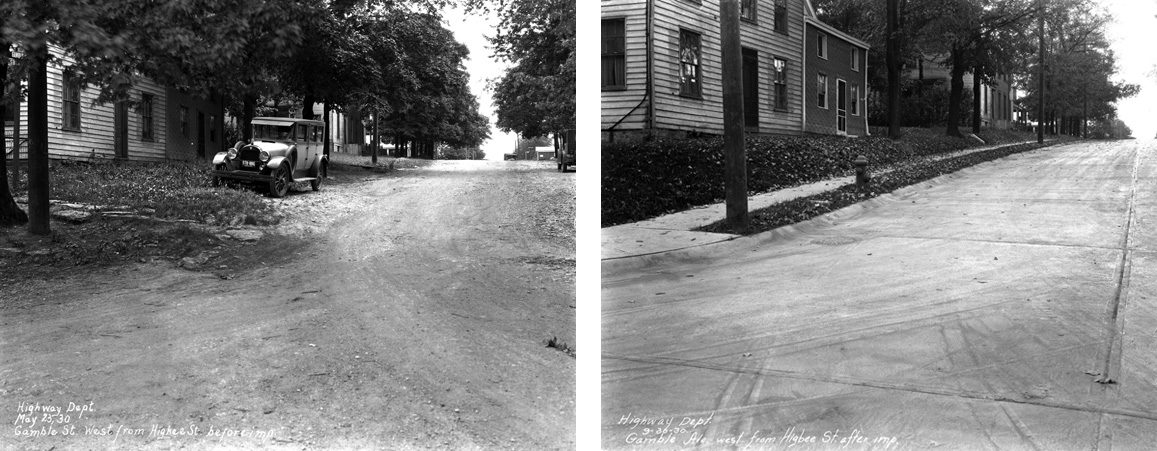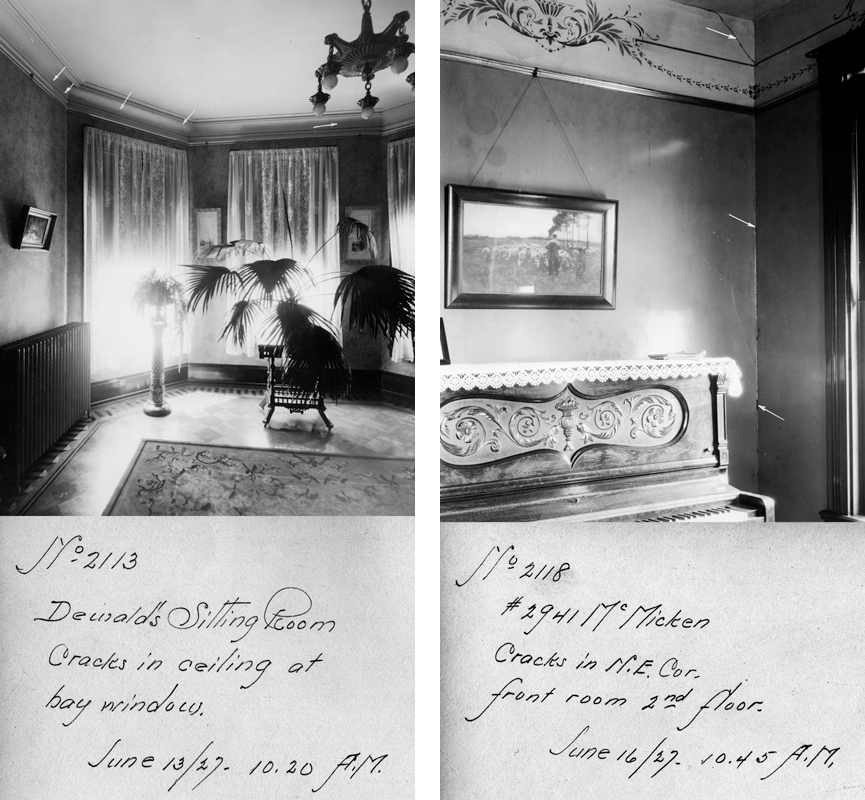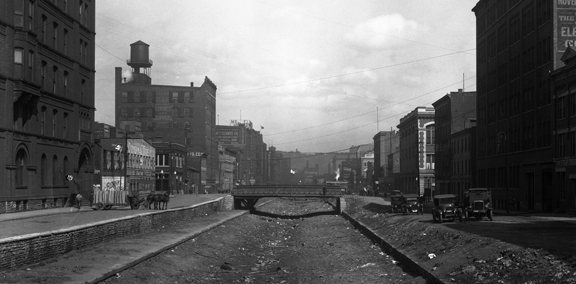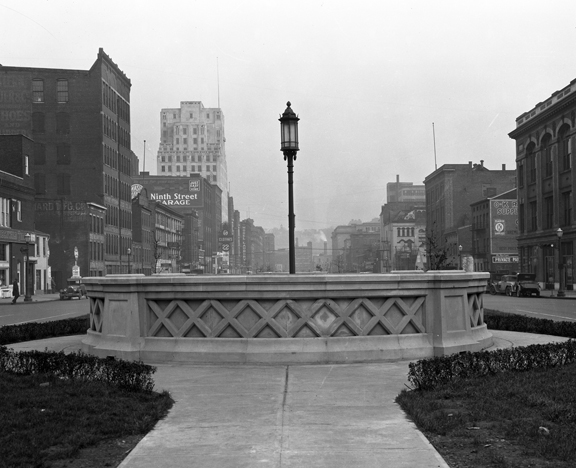The University of Cincinnati has embarked on a project to build a next-generation UC digital repository, and has joined two new consortia that will greatly advance the creation of this new repository. The initiative is being led by the University of Cincinnati Libraries in partnership with UCIT, the Office of Research, and the College of Design, Architecture, Art, and Planning (DAAP), the initial partners in what is expected to be a university-wide effort.
Tag Archives: Digital Projects
Central Parkway and The Making of a "Grand Boulevard" = Adventures in the Subway and Street Improvements Digitization Project
By Angela Vanderbilt
The primary task of the Rapid Transit Commission and the 1917 Bauer Bill (Senate Bill 264, which authorized the formation of a commission for the design and construction of a rapid transit system) was not the construction of the subway alone, but the construction of Central Parkway, the “grand boulevard” that was to replace the Miami & Erie Canal. The Commission was also tasked with the secondary subway project to ensure that the Parkway was built, since the one could not commence before the other was underway, a means of ensuring the success of both.
When it was first proposed in a 1907 report, written by landscape architect George Kessler regarding the development of a city park system for Cincinnati, Central Parkway was meant to rival Boston’s Commonwealth Avenue and the grand boulevards of Europe, to be landscaped and lined by stately brownstones and mansions. Accented by decorative lampposts, fountains, trees and shrubbery, the new boulevard was to provide a park-like atmosphere for Cincinnatians, with sidewalks to stroll and benches on which to relax and enjoy the scenery of the Parkway as it wound its way north from Walnut Street in the downtown business district to Lundlow Avenue in the residential neighborhood of Clifton.
"Thirsty and Ye Gave Me Drink"-The Henry Probasco Fountains = Adventures in the Subway and Street Improvements Digitization Project
By: Angela Vanderbilt
A prominent figure in early Cincinnati history, Henry Probasco was both businessman and philanthropist, committing his time to numerous Cincinnati organizations and societies, accumulating a large personal library of rare books and manuscripts, as well as an extensive collection of prints and paintings, both rivaling the finest in the country, and dedicating two elaborate fountains to the citizens of Cincinnati in the late 1800s.
Henry Probasco, along with his business partner and brother-in-law, Tyler Davidson, managed one of the most successful hardware companies in Cincinnati in the 1800’s – Tyler Davidson & Company. Probasco joined the business in 1835 as a clerk, and in 1840 was made a partner. The same year, he married Davidson’s half-sister, Julia. Together with Davidson, Probasco succeeded in expanding the business quickly, and by 1846, Tyler Davidson & Company was the largest hardware store in Cincinnati. In 1851, at Probasco’s suggestion, the partners built a new, multi-level structure on the site of the original store at 140-142 Main Street, between Second and Third Streets, and within three years, their sales quadrupled. Pearl Street, Water Street and Front Street were also located in this area, and ran parallel with Second Street to the north and the river to the south. The hardware store, Second, Front, Water, and Pearl Streets no longer exist; all have been replaced with I-71, Fort Washington Way, the Great American Ball Park and Paul Brown Stadium, among other attractions along the riverfront.
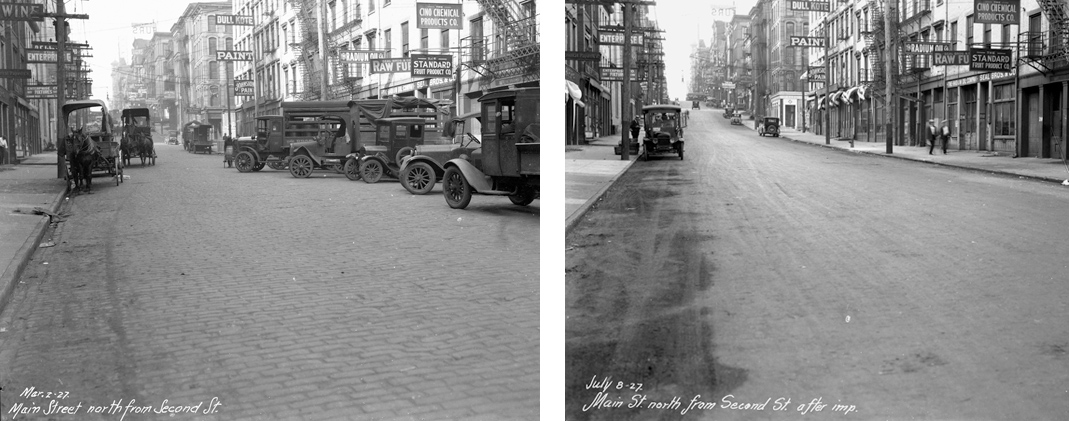
After Tyler Davidson passed away in 1865, Henry Probasco sold the hardware business to former partner, William Lowry, in 1866. The building would have been located on the east (right) side of Main Street between Second and Third Streets, in the vicinity of the images above (Left: March 2, 1927; Right: July 8, 1927.
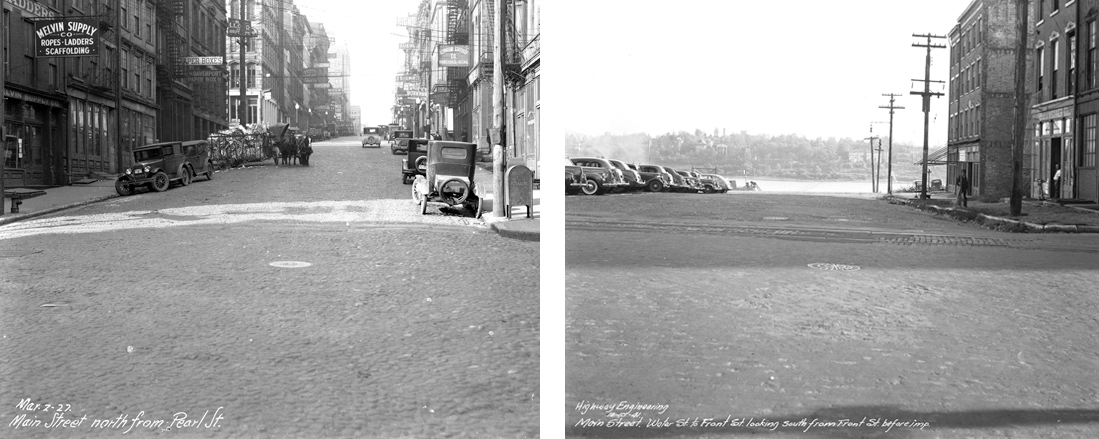
In the early history of Cincinnati, several streets were platted running parallel with the Ohio River, but which no longer exist. These were Pearl Street, Water Street, Front Street and Second Street. These have been replaced with Fort Washington Way, I-71, as well as museums, major league sports arenas and other businesses and attractions along the riverfront. (Left: March 2, 1927; Right: October 10, 1941)
Civil War Exemptions
By: Janice Schulz
The Archives and Rare Books Library’s collection of Hamilton County Civil War Exemptions is now available in digital format on the UC Libraries’ Digital Resource Commons. The collection consists of 102 documents dated from August-October, 1862, that can be searched, viewed, downloaded and printed. The documents in this collection were created as proof of exemption status under the Militia Act of 1862, which resulted in the first attempt to conscript Union soldiers in the Civil War. This collection represents a very small window in time during the long years of the Civil War, but it marks an important turning point in how the Union built its army.
Photographic Collections and Archive Repositories: A Balancing Act = Adventures in the Subway and Street Improvements Digitization Project
By: Angela Vanderbilt
The University of Cincinnati’s Archives and Rare Books Library (ARB) maintains numerous collections containing records of historic value for research and scholarly use. These materials are comprised of a variety formats, including printed documents, university records, sound recordings, and photographic prints and negatives.
One of these collections is the Ohio Network collection, comprised of historic local government and public records. The City of Cincinnati Engineer Records is part of this collection, and contains records produced by the engineer’s office from 1851 through 1957, including those of the Rapid Transit Commission for the subway and Central Parkway construction, as well as other street improvements carried out by the city within the same timeframe. And among these records are the negatives and photographic prints that are currently being digitized and that will be made available online via the ARB and Digital Collections web sites.
From Potter's Field to Union Terminal: The History of Lincoln Park = Adventures in the Subway and Street Improvements Digitization Project
By: Angela Vanderbilt
In my June 25 blog, “Ezzard Charles Drive: The Making of a Parkway,” I described how over time, many of the streets and locations captured in the Subway and Street Improvements images no longer exist, or have been altered in name or appearance, as they have been adapted for new uses. The area discussed in that blog is currently the site of the Cincinnati Museum Center, which occupies the former Union Terminal. Most residents of Cincinnati are familiar with the most current use of this building as well as its original purpose, a major railroad terminal by which passengers and freight from all over the United States passed through the Queen City. However, this area served two other purposes prior to the building of the terminal station, the first of which may surprise you. Continue reading
Cincinnati Street Names-A Who's Who of Cincinnati History = Adventures in the Subway and Street Improvements Digitization Project
By: Angela Vanderbilt
The subway and street improvements photograph collection is truly a wealth of historic information about the city of Cincinnati in the first half of the 20th century. As with most cities, many of the streets and avenues are named for the founders and prominent families who helped establish the city, as well as important statesmen such as presidents, governors and military heroes. Cincinnati has her fair share of these, with the city directories reading like a “Who’s Who” of Cincinnati’s political, cultural and economic development, with street names such as Ludlow, Symmes, and Patterson, St. Clair, Gamble and Ault, Anderson, Findlay and Wade, among others.
Home Interiors of the 1920s = Adventures in the Subway and Street Improvements Digitization Project
By: Angela Vanderbilt
Contained within the subway portion of the photograph collection are images of the interiors of homes along McMicken Avenue taken during the construction of the subway. Originally intended to serve as evidence for claims by homeowners of structural damage to the houses caused by blasting for the subway tunnels, the pictures now serve as a historic reference of domestic life during the 1920s.
Paving the Way through Cincinnati = Adventures in the Subway and Street Improvements Digitization Project
By: Angela Vanderbilt
Downtown Cincinnati at the turn of the 20th century was a bustling business and commercial center, but with a dangerous mixture of pedestrians, horse-pulled wagons and carriages, street cars, and unseasoned automobile drivers. Add to this a mess of unpaved or cobblestoned streets, a lack of traffic laws, speed limits, and stop signs at intersections, with streetcar tracks criss-crossing lanes. It was a recipe for disaster.
False Facades Offer Aesthetic Disguise = Adventures in the Subway and Street Improvements Digitization Project
By Angela Vanderbilt
The story of abandoned subway stations and tracks hidden beneath busy city streets is not unique to Cincinnati. Other large cities, such as New York, London, and Paris have similarly mysterious and intriguing stories to tell. An article I recently read in The New York Times introduced me to this underground world of hidden subway ventilation shafts disguised by false building facades, with doors from which people occasionally exit, but never seem to enter. Some of these subterranean secrets are in use, while others have been abandoned like Cincinnati’s own subway stations beneath Central Parkway.
What’s fascinating is the effort made to disguise these facilities, to blend them in with the neighboring buildings. While it seems a logically aesthetic means of making the utilitarian more appealing, some have argued that the cities in which these structures are located are trying to hide a deep secret. For comparison, consider the Cincinnati subway – when the subway and Central Parkway were first being constructed, the ventilation chimneys and the entrances to the below-ground stations were nicely appointed with decorative stonework.

